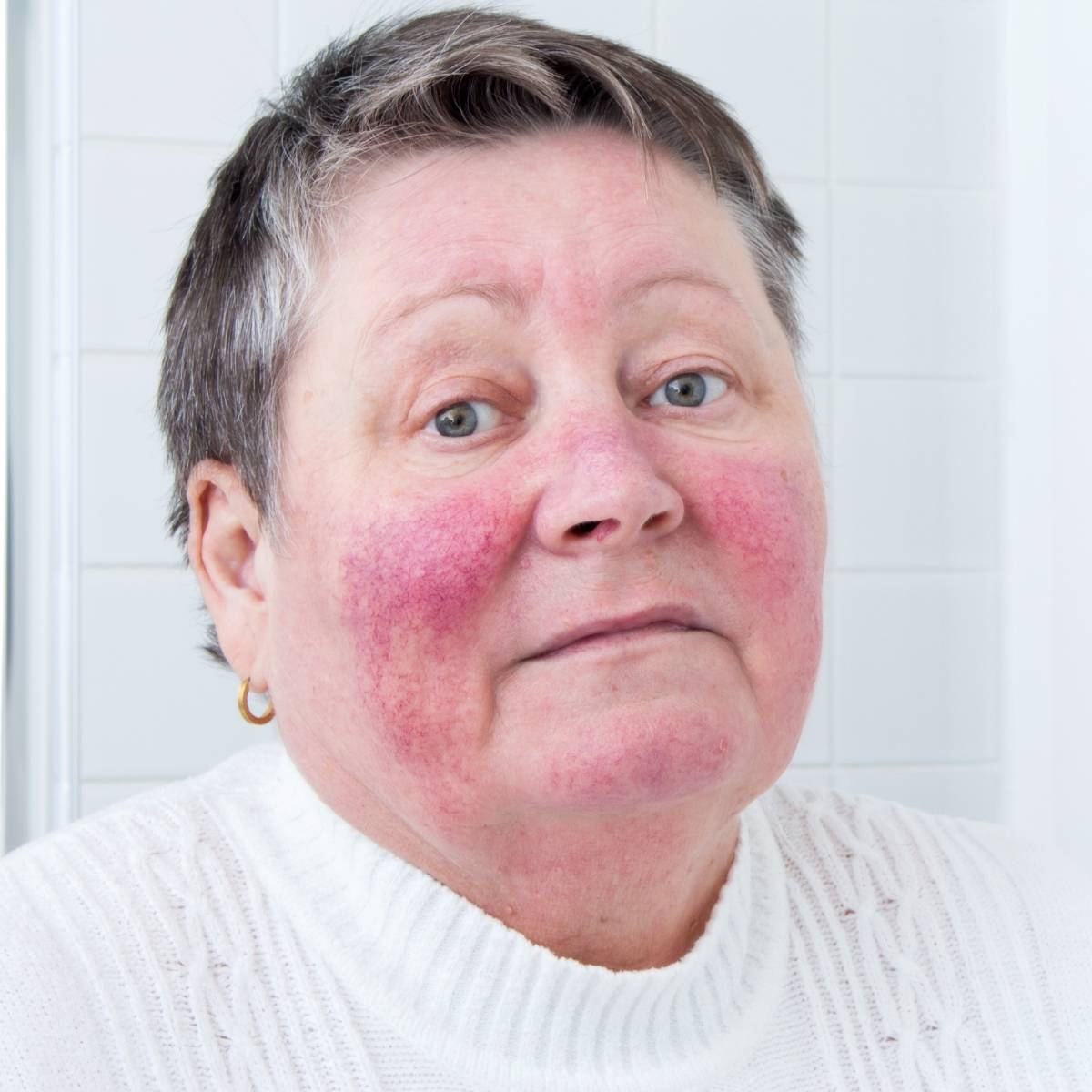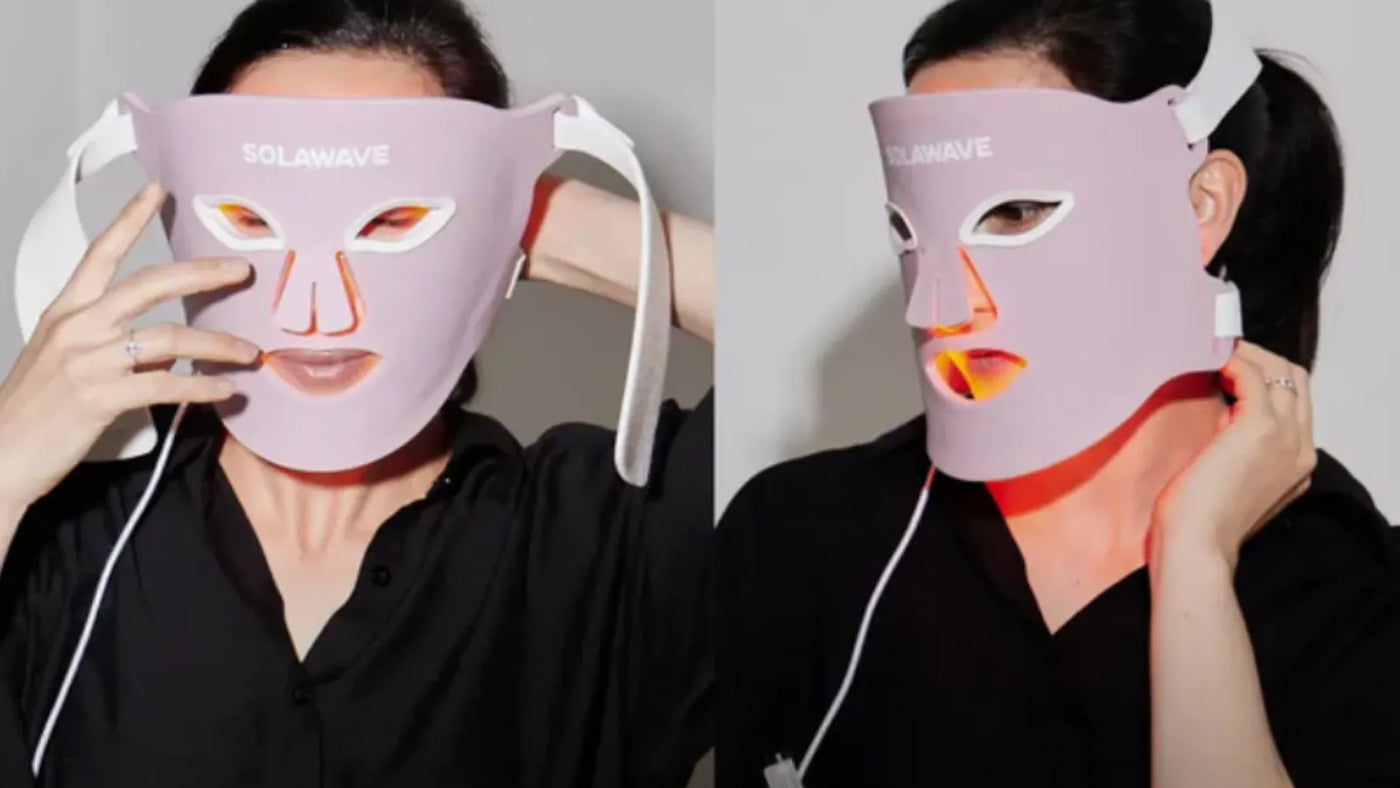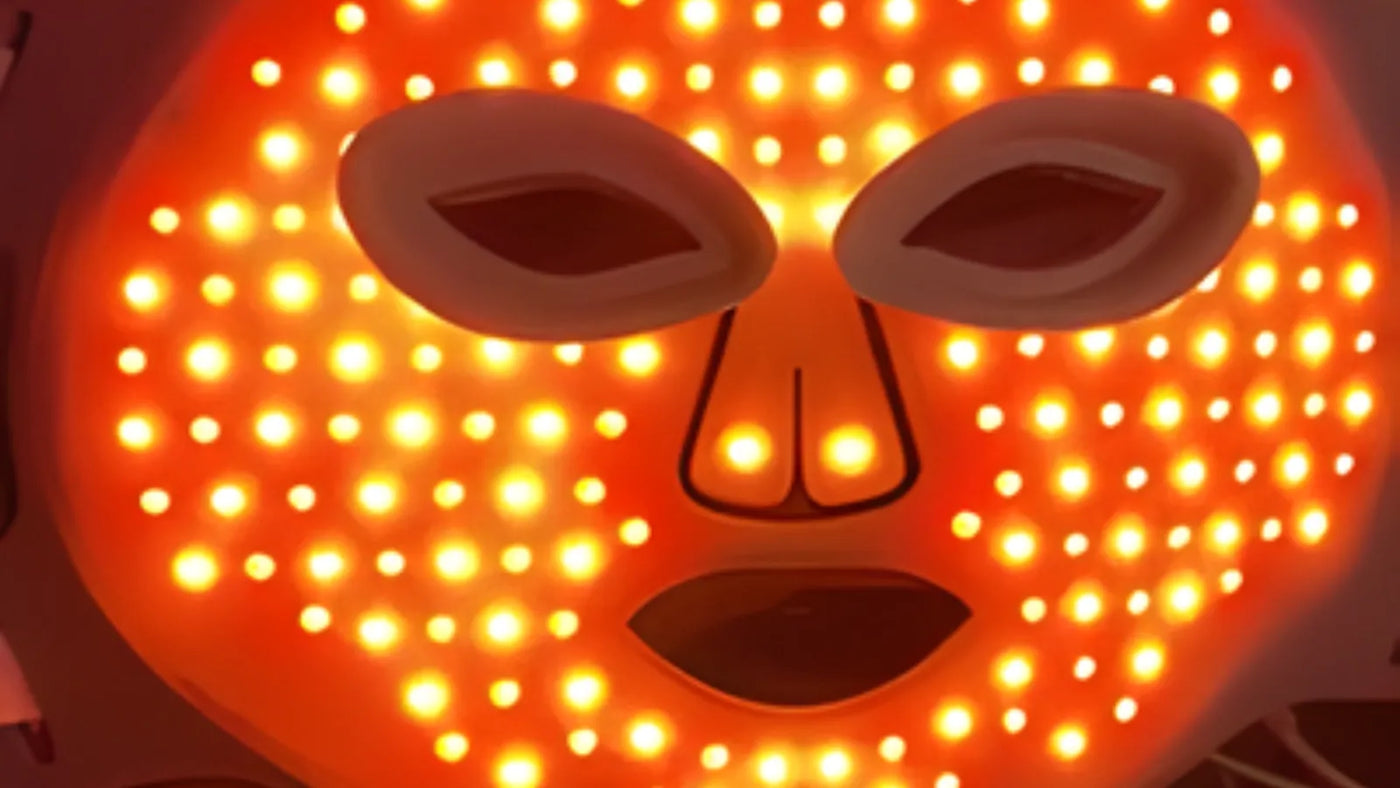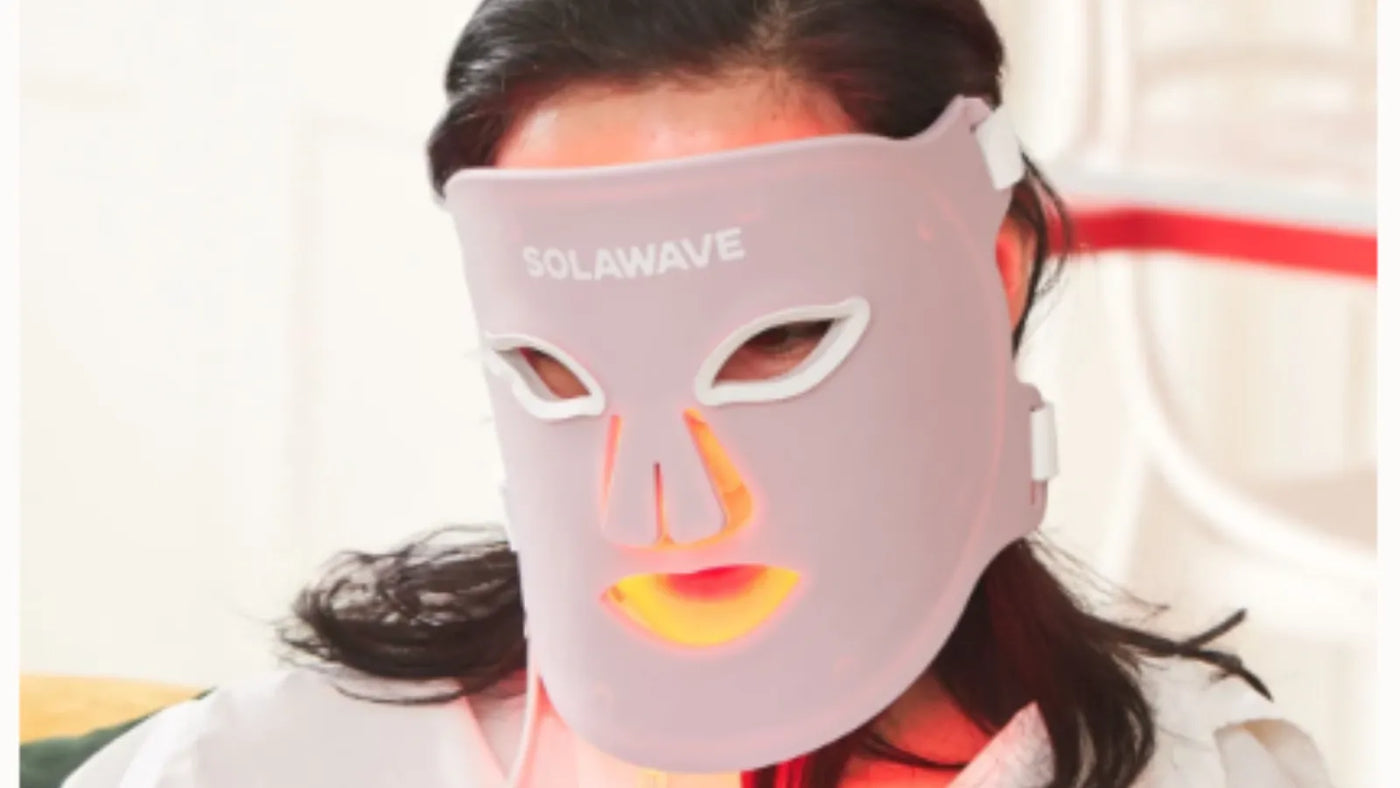

Rosacea and Red Light Therapy: Can It Help?
Rosacea is a common skin condition that affects an estimated 16 million Americans, most of whom are women. The bad news is that there is currently no known cure. The good news is that it can be treated, and in many cases it can be controlled.
In this blog post, we will discuss what rosacea is, what causes it, and how to treat it. We will also answer some frequently asked questions. So if you're concerned about your red face, keep reading!
What is Rosacea?
Rosacea is a chronic, inflammatory skin condition that primarily affects your face. Common signs include persistent redness, frequent flushing, and visible blood vessels. You may also experience bumps, pimples, and sensations like burning, stinging, or itching. In some cases, rosacea can impact your eyes, causing dryness, redness, and irritation. This progressive condition can worsen over time if not properly managed. While there are various treatments and medications available, it’s important to understand that Red Light Therapy is not a cure or treatment for rosacea or any other medical condition.
What Causes Rosacea?
The exact cause of rosacea remains unclear, but several factors may contribute to its development. These include genetic predisposition, environmental triggers, and certain lifestyle choices.
Genetic Factors That Cause Rosacea
Your genetics play a significant role in your risk of developing rosacea. The condition is more common if you have:
-
Fair or sensitive skin
-
A family history of rosacea
-
Celtic or Scandinavian ancestry
Having these genetic factors increases your likelihood of experiencing rosacea, but it does not guarantee you will develop the condition. If you notice symptoms, consult a dermatologist for guidance on proven treatment options.
Environmental Factors That Cause Rosacea
Environmental factors can significantly influence rosacea flare-ups. Common triggers include:
-
Exposure to sunlight or ultraviolet (UV) light
-
Extreme temperatures—either hot or cold
-
Windy conditions
-
High humidity
-
Emotional stress
To help manage your rosacea, try to minimize exposure to these triggers. Use sunscreen and protective clothing when outdoors, and practice stress-reducing techniques.
Lifestyle Choices That Cause Rosacea
Certain lifestyle habits can make rosacea symptoms more noticeable. These include:
-
Consuming alcohol
-
Eating spicy or hot foods
-
Smoking
-
Using harsh skin care products
Making mindful lifestyle choices can help you reduce flare-ups and support overall skin health. Always consult a healthcare professional for advice tailored to your needs.
How to Treat Rosacea
While there is currently no cure for rosacea, there are several effective ways to manage and control your symptoms. The right approach can help you reduce flare-ups, minimize discomfort, and improve your skin’s appearance. Treatment plans are highly personalized and may include topical medications, oral medications, and various in-office procedures. It’s important to work closely with a dermatologist to determine the best options for your unique needs.
Topical Medications for Rosacea
Topical medications are often the first line of defense in managing rosacea symptoms. These creams, gels, or lotions are applied directly to your skin and can help reduce redness, inflammation, and visible blood vessels. Some of the most commonly prescribed topical treatments include:
-
Metronidazole: This is an antibiotic gel or cream that helps control inflammation and reduce redness. It is widely used for mild to moderate rosacea and is generally well-tolerated.
-
Brimonidine: This topical gel works by constricting blood vessels, which can temporarily reduce facial redness. It provides quick results, often within 30 minutes, but the effects are temporary and need to be reapplied as directed.
-
Azelaic Acid: This naturally occurring acid helps reduce swelling, redness, and the number of pimples. It can also help improve skin texture over time.
-
Ivermectin: This topical medication targets skin mites that may contribute to rosacea symptoms and also helps reduce inflammation.
Topical medications are usually applied once or twice daily, depending on your dermatologist’s instructions. Consistency is key for seeing results, and it’s important to use gentle skin care products alongside your prescription to avoid irritation.
Oral Medications for Rosacea
For moderate to severe rosacea, or when topical treatments are not enough, oral medications may be recommended. These medications work from within to control inflammation and reduce the frequency and severity of flare-ups. Common oral treatments include:
-
Antibiotics: Oral antibiotics such as doxycycline and tetracycline are commonly prescribed for their anti-inflammatory properties. They can help reduce redness, swelling, and the number of bumps and pimples associated with rosacea. These are usually prescribed for short-term use to bring symptoms under control.
-
Isotretinoin: In severe cases, especially when rosacea is resistant to other treatments, isotretinoin (a powerful oral retinoid) may be considered. This medication is typically reserved for cases with significant acne-like breakouts and is closely monitored due to potential side effects.
-
Low-dose Oral Medications: Sometimes, low-dose antibiotics are used for their anti-inflammatory effects rather than their ability to fight bacteria. This approach can help manage symptoms with fewer side effects.
Oral medications are usually prescribed for a limited time, and your dermatologist will monitor your progress and adjust your treatment as needed. It’s essential to follow your provider’s instructions and report any side effects promptly.
Laser Therapies for Rosacea
In-office procedures such as laser therapies can be highly effective for certain symptoms of rosacea, especially visible blood vessels and persistent redness. These treatments are performed by dermatologists or trained professionals.
Lasers, such as pulsed dye lasers (PDL) and intense pulsed light (IPL), target and shrink visible blood vessels, reducing redness and improving overall skin tone. Multiple sessions may be needed for optimal results.
Laser-based treatments can offer significant improvements, but they are not suitable for everyone and may require ongoing maintenance sessions. Always consult with a qualified dermatologist to determine if these options are appropriate for your skin type and rosacea symptoms.
Additional Tips for Managing Rosacea
Beyond medical treatments, there are several steps you can take to help manage your rosacea and support healthy skin:
-
Identify and avoid triggers: Common triggers include sun exposure, spicy foods, alcohol, hot beverages, and stress. Keeping a symptom diary can help you pinpoint your personal triggers.
-
Use gentle skin care products: Choose fragrance-free, non-abrasive cleansers and moisturizers designed for sensitive skin.
-
Protect your skin from the sun: Daily use of a broad-spectrum sunscreen with SPF 30 or higher is essential.
-
Consult your dermatologist regularly: Ongoing care and communication with your healthcare provider will help you adjust your treatment plan as needed.
Can You Use Light Therapy To Treat Rosacea?
At-home Red Light Therapy skincare devices are not approved treatments for any skin condition, including rosacea. While professional in-office procedures like Intense Pulsed Light Therapy and Laser Therapy can help reduce redness, flushing, and visible blood vessels associated with rosacea, these treatments are performed by trained medical professionals and are not the same as at-home devices.
-
Intense Pulsed Light Therapy (IPL): This treatment uses a broad spectrum of light to target redness and visible blood vessels in your skin, and is administered in a clinical setting.
-
Laser Therapy: This approach uses a focused beam of light to address redness and visible blood vessels, and is also performed by a dermatologist or qualified provider.
Both IPL and Laser Therapy may help manage certain rosacea symptoms, but they can come with side effects such as temporary redness, swelling, and bruising. It’s essential to discuss the risks and benefits of these therapies with your doctor before considering them.
Remember, at-home Red Light Therapy and other Light Therapy devices are not proven to treat, cure, or manage rosacea or any other skin condition. Always consult a healthcare professional for evidence-based treatment options tailored to your needs.
Conclusion
Rosacea is a common skin condition that affects millions of people around the world. It can be a very frustrating condition to deal with, but there are treatments available that can help to improve the appearance of your skin. If you think you might have it, talk to your doctor about the best treatment options for you.
Sources:






















